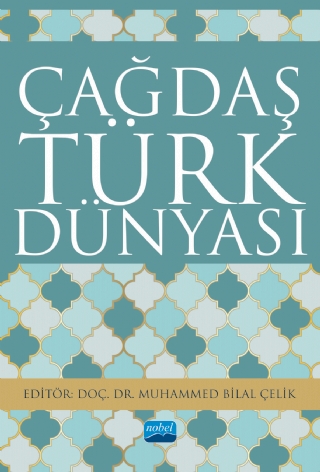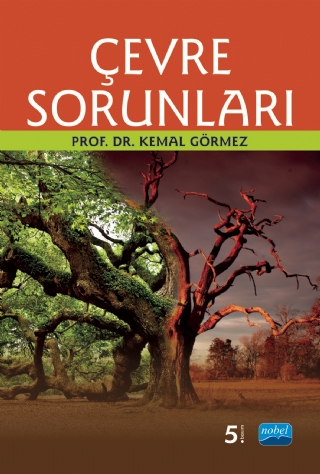Social Studies Teaching \ 1-1

The Turkish World has an important place in the world agenda as a reality that is of interest, needs to be taken into account and preserves its importance today as it was in the past. Being at the center of the world's transportation, energy and trade corridor, it has been in the focus of attention of global powers for a long time. During the 19th and 20th centuries, most of the communities and peoples that make up the Turkish World remained in captivity; even today, some of them still cannot lead an independent life, however, they protect their own identity by protecting their national and religious values. In this context, with this third book of our series, which reveals our 4000 years of Turkish history, titled "Contemporary Turkish World", we have visited Turkestan, Siberia, Idil-Ural, Crimea, Caucasus, Iran, the Balkans, the Middle East and Cyprus from the 1850s to 2020. As we examined the Turkish presence in Turkey, we also tried to reveal the policies of the countries that have a say in the world, as well as Turkey, towards the Turkish World and how they perceive this world.
Although the book was prepared especially for university students, it has become a book that can be used by those who are interested in the subject, who want to have basic knowledge and who want to learn about the approaches of world power centers towards the Turkish World. Hope it is useful…
Although the book was prepared especially for university students, it has become a book that can be used by those who are interested in the subject, who want to have basic knowledge and who want to learn about the approaches of world power centers towards the Turkish World. Hope it is useful…

Ecological problems, which a sage defined as "nature's revenge on humankind", are among the main problems faced by human beings today.
Environmental problems, which have become one of the problems threatening humanity since the second half of the 20th century, have generally become felt as a result of the Industrial Revolution, although its roots date back to ancient times. Since then, it has grown to great sizes. Despite the measures developed in recent years, many people are not hopeful for the future yet. Discussions and researches on this problem, which was perceived only as pollution in the past and which covers all areas of social life, are increasingly intensifying.
This book was written mainly to meet students' resource needs on ecology and environmental problems.
Environmental problems, which have become one of the problems threatening humanity since the second half of the 20th century, have generally become felt as a result of the Industrial Revolution, although its roots date back to ancient times. Since then, it has grown to great sizes. Despite the measures developed in recent years, many people are not hopeful for the future yet. Discussions and researches on this problem, which was perceived only as pollution in the past and which covers all areas of social life, are increasingly intensifying.
This book was written mainly to meet students' resource needs on ecology and environmental problems.

If it is necessary to define an "environment" within the general framework of the concept of geography, the environments in which living and non-living beings coexist, in communication with each other in the form of energy and matter exchange, and the distribution of these environments on the earth should come to mind.
The issue of what the basic starting point should be in human-environment or human-environment interaction is a matter of debate even today. Because today, human beings can change the physical characteristics of the environment in which they live, in line with their own interests. When necessary, hills and river valleys can be destroyed in order to open up residential areas, or by removing the natural surface cover (such as cutting forests, creating large water bodies by building dams), the energy exchange between the earth and the atmosphere, and thus the local climate, is changed.
Although humans cause some environmental changes by changing the surface in local areas, the factors that determine the boundaries of settlement and human activities are physical geography elements. Large water bodies such as oceans and seas, the upper parts of the mountains after a certain level (may vary depending on geographical latitude), desert areas are the main limiting factors, but rivers and seasides and areas with fertile plains have been the general centers of attraction.
Geography has developed its own schools over these concepts. Geographers, who took part in the movement that emerged in the 1850s, developed "environmental determinism" based on the interpretation that human activities are affected by physical geography elements, in other words, the physical environment or environment shapes man. On the other hand, in the following years, the interpretation of "possibilism", in which it is argued that people can determine how the opportunities offered by the environment to people, will be used, has been developed.
In this book, the general structure and characteristics of all the basic components that make up our world, mountains, plains, plateaus, oceans and seas, and undoubtedly the atmosphere, which we define as the environment, space or earth, which are the basis of these discussions, and their interactions with each other, are discussed in a clear and understandable language. has been written.
The issue of what the basic starting point should be in human-environment or human-environment interaction is a matter of debate even today. Because today, human beings can change the physical characteristics of the environment in which they live, in line with their own interests. When necessary, hills and river valleys can be destroyed in order to open up residential areas, or by removing the natural surface cover (such as cutting forests, creating large water bodies by building dams), the energy exchange between the earth and the atmosphere, and thus the local climate, is changed.
Although humans cause some environmental changes by changing the surface in local areas, the factors that determine the boundaries of settlement and human activities are physical geography elements. Large water bodies such as oceans and seas, the upper parts of the mountains after a certain level (may vary depending on geographical latitude), desert areas are the main limiting factors, but rivers and seasides and areas with fertile plains have been the general centers of attraction.
Geography has developed its own schools over these concepts. Geographers, who took part in the movement that emerged in the 1850s, developed "environmental determinism" based on the interpretation that human activities are affected by physical geography elements, in other words, the physical environment or environment shapes man. On the other hand, in the following years, the interpretation of "possibilism", in which it is argued that people can determine how the opportunities offered by the environment to people, will be used, has been developed.
In this book, the general structure and characteristics of all the basic components that make up our world, mountains, plains, plateaus, oceans and seas, and undoubtedly the atmosphere, which we define as the environment, space or earth, which are the basis of these discussions, and their interactions with each other, are discussed in a clear and understandable language. has been written.

General Physical Geography has been prepared as a textbook for the students of the social studies, geography and classroom teaching programs of the universities and the geography department. The scope of the book is arranged in accordance with the curriculum of the General Physical Geography course accepted by the Council of Higher Education. In addition, the unique science systematic of geography was taken into account in determining the content of the book. The science of geography, which is described as the synthesis and mother of all sciences, consists of two main branches of science, physical and human geography. Therefore, this book covers the basic issues of geography directly related to space (earth) and contributes to our better understanding of the natural structure and interactions of the world we live in.
The book is divided into eight chapters and numerous subheadings. In the first part, the definition, subject, development and scientific identity of geography; in the second part, the Universe, the Solar System and the Earth; in the third part, the formation of the earth, the factors affecting this process and the main topographies; The fourth chapter focuses on climate science, Earth's atmosphere and climate system. In the fifth chapter, water geography, distribution, characteristics and effects of underground and surface waters; in the sixth chapter, the formation of soil, its types, distribution and soil problems; In the seventh chapter, the classification of plants, the conditions of their habitats and their distribution on the earth are discussed. In the eighth and final chapter, various topics of map knowledge are covered in detail; maps, graphs, diagrams and geographic information systems have been touched upon.
The topics covered in the book are explained in a simple and understandable language. In order to better understand the subjects, efforts have been made to provide visual materials such as a large number of figures, maps, photographs, graphics, and tables, as well as reading passages, notes, warnings, etc.
The book is divided into eight chapters and numerous subheadings. In the first part, the definition, subject, development and scientific identity of geography; in the second part, the Universe, the Solar System and the Earth; in the third part, the formation of the earth, the factors affecting this process and the main topographies; The fourth chapter focuses on climate science, Earth's atmosphere and climate system. In the fifth chapter, water geography, distribution, characteristics and effects of underground and surface waters; in the sixth chapter, the formation of soil, its types, distribution and soil problems; In the seventh chapter, the classification of plants, the conditions of their habitats and their distribution on the earth are discussed. In the eighth and final chapter, various topics of map knowledge are covered in detail; maps, graphs, diagrams and geographic information systems have been touched upon.
The topics covered in the book are explained in a simple and understandable language. In order to better understand the subjects, efforts have been made to provide visual materials such as a large number of figures, maps, photographs, graphics, and tables, as well as reading passages, notes, warnings, etc.

This book, in which we try to deal with Turkish History and Culture in a wide range from about 2500 BC to the beginning of the 20th century, is prepared for both undergraduate students and those who are interested in the subject and want to acquire basic information. . From the origin and first living areas of the Turks to the first state they established in history, from their meeting with Islam to the first Muslim Turkish states, from the Turkish presence in Anatolia to the Ottoman Empire that ruled three continents, the turning points of Turkish history and the state organization and cultural life of these political structures, the expert in the field. You will read from the pen of the teachers…
